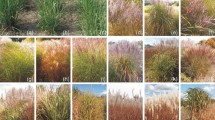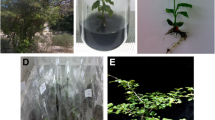Abstract
Angelica acutiloba, a medicinal plant used as a natural medicine Touki, was clonally propagated through axillary buds in vitro. No substantial differences were found in the random amplified polymorphic DNA (RAPD) pattern between the original A. acutiloba and the plant propagated in vitro, suggesting no changes in the DNA sequences and structure during in vitro propagation. The genetic similarities of several Angelica plants were investigated by restriction fragment length polymorphism (RFLP) and RAPD analyses. The RFLP and RAPD patterns of A. sinensis Diels were substantially different from those of A. acutiloba. Using ten different restriction enzymes, no RFLP was observed in the varieties of A. acutiloba. By RAPD analysis, A. acutiloba varieties can be classified into two major subgroups, i.e., A. acutiloba Kitagawa and A. acutiloba Kitagawa var. sugiyamae Hikino. The varieties of A. acutiloba Kitagawa in Japan and Angelica spp. in northeast China exhibited a very close genetic relationship.
Similar content being viewed by others
Author information
Authors and Affiliations
Additional information
Received: 13 March 1998 / Revision received: 28 July 1998 / Accepted: 21 August 1998
Rights and permissions
About this article
Cite this article
Watanabe, A., Araki, S., Kobari, S. et al. In vitro propagation, restriction fragment length polymorphism, and random amplified polymorphic DNA analyses of Angelica plants. Plant Cell Reports 18, 187–192 (1998). https://doi.org/10.1007/s002990050554
Issue Date:
DOI: https://doi.org/10.1007/s002990050554




